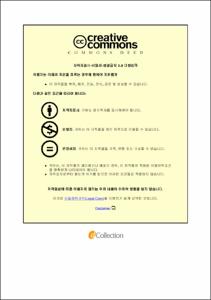발아메밀의 제조 및 발아 중 α-Amylase 활성도와 Rutin 함량의 변화
- Alternative Title
- Manufacturing Germinated Buckwheat and Change of α-Amylase Activity and Rutin Contents during Germination
- Abstract
- This study was aimed to evaluate change in nutrition factor and rutin contents during germination of buckwheat. Buckwheat is known for healthy food, and high contents of flavonoids such as rutin and quercetin that can be used as functional food material and pharmaceutical compounds. In this study, condition of buckwheat germination was established to make rutin contents be maximum, and nutritional properties, α-amylase activity was investigated according to germination method.
To investigate the best condition of germination rate, buckwheat germination was performed with different temperature and with or without steeping. The best condition of germinating buckwheat was steeping at room temperature (20-25℃) for 24 hours and then germinating buckwheat with continuous contacting air and moisture. But for the large scale germination, temperature was changed due to solubility of buckwheat starch. Soluble starch could make mold to produce awkward odor, so it doesn’t adapt foods. After 10 day germination, sprouts of buckwheat was classified every centimeter up to 10 cm. And then, it was dried with hot air at 40℃ and powdered.
To measure α-amylase activity, CERALPHA method (AOAC, 2001) was used(Megazyme International Ireland, Ireland). In case of common buckwheat, α-amylase activity was increased up to 4 cm of sprout length, and 3.0-4.0 cm of sprouts had a maximum activity, 27.49 CU/g. In case of tartary buckwheat had maximum α-amylase activity, 7.36 CU/g at 1.0-2.0 cm of sprouts. The rutin contents was measured with HPLC. The longer length of spouts was, the higher rutin contents was. In case of common buckwheat, it had 13 mg/L as grain. After germination, rutin content was 1,347 mg/L in dark condition and 1,617 mg/L in bright condition. And rutin content of tartary buckwheat was 487 mg/L, and after germination, 4,549 mg/L in dark condition and 5,160mg/L in bright condition. Both of 2 type of buckwheat had higher rutin content at germination with light than it at germination without light. Therefore, to get higher rutin content, germination should be performed at 17 ± 0.5℃ with light using 1.16 g of buckwheat in 10 ㎠ of germination container.
- Issued Date
- 2016
- Awarded Date
- 2016. 2
- Type
- Dissertation
- Publisher
- 부경대학교 대학원
- Affiliation
- 부경대학교 대학원
- Department
- 대학원 식품공학과
- Advisor
- 양지영
- Table Of Contents
- Ⅰ. 서론 1
Ⅱ. 실험방법 및 재료 4
1. 실험 재료 4
2. 시약 4
3. 메밀의 발아 5
4. 메밀의 분류 및 건조 7
5. 일반성분 분석 8
6. α-Amylase 활성도의 측정 8
7. Rutin 함량의 측정 9
Ⅲ. 결과 및 고찰 12
1. 메밀의 발아 조건 12
2. 메밀과 발아메밀의 일반성분 17
3. 메밀의 발아 중 α-amylase 활성도 변화 23
4. 메밀의 발아 조건에 따른 rutin 함량 변화 27
Ⅳ. 요약 31
Ⅴ. 참고문헌 33
- Degree
- Master
- Files in This Item:
-
-
Download
 발아메밀의 제조 및 발아 중 α-Amylase 활성도와 Rutin 함량의 변화.pdf
기타 데이터 / 2.2 MB / Adobe PDF
발아메밀의 제조 및 발아 중 α-Amylase 활성도와 Rutin 함량의 변화.pdf
기타 데이터 / 2.2 MB / Adobe PDF
-
Items in Repository are protected by copyright, with all rights reserved, unless otherwise indicated.